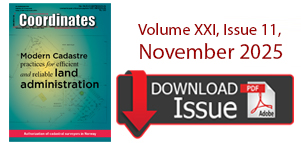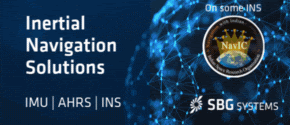Articles in the GNSS News Category
Arianespace to launch 8 new Galileo satellites
The European Union Agency for the Space Programme (EUSPA) has chosen Arianespace to launch four new Galileo satellites. With this order, EUSPA takes over the role of placing launch services contracts for Galileo from ESA, which acted so far in the name and on behalf of the European …

ISRO and OPPO India to work towards providing NavIC messaging services
NavIC system, in addition to its primary function of providing PNT services, is also capable of broadcasting short messages. This messaging service is being used for broadcasting safety-of-life alerts in areas with poor or no communication, particularly in the oceans.
Indian Space Research Organisation has entered …
GIOVE-A, Galileo Pathfinder satellite, de-commissioned
Surrey Satellite Technology Ltd (SSTL) has successfully de-commissioned GIOVE-A, the pathfinder satellite for Europe’s Galileo constellation, after 16 years of operations in Medium Earth Orbit (MEO). The decision to decommission the satellite was made due to the obsolescence in computing systems required for the operation of GIOVE-A, and de-commissioning of the …
Galileo satellites arrive at Europe’s Spaceport
Galileo atellites crossed the Atlantic from ESA’s ESTEC Test Centre in Noordwijk, the Netherlands to Cayenne in French Guiana. These are the first of the last batch of Galileo First Generation satellites, known as ‘Batch 3’, made up of 12 satellites in all. They are built by OHB SE …
Experimenting satellite-based positioning on the lunar surface
The project NEIL (Navigation Early Investigation on Lunar surface) will experiment satellite-based positioning on the lunar surface. The project is at the center of an agreement between the Italian Space Agency (ASI) and NASA, linked to the CLPS 19-D mission (NASA’s Commercial Lunar Payload Service, Task Order 19) in …
Three GPS III space vehicles “Available for Launch”
The U.S. Space Force’s Space Systems Command recently declared the eighth GPS III satellite as “Available for Launch.” This significant accomplishment officially marks the third space vehicle within the GPS III program to be declared available for launch in the past three months.
GPS III SV06, SV07, and SV08 …
Galileo Second Generation proof-of-concept testing begins
The first Galileo Second Generation hardware has begun testing, with test versions of the satellites’ navigation payloads undergoing evaluation by Airbus Defence and Space at their Ottobrunn facility in Germany and by Thales Alenia Space at ESA’s ESTEC technical centre in the Netherlands.
These testbed versions of these new navigation payloads …
DHS publishes free resources to protect critical infrastructure from GPS spoofing
The Department of Homeland Security (DHS) Science and Technology Directorate (S&T) announced today it has published the Positioning, Navigation, and Timing (PNT) Integrity Library and Epsilon Algorithm Suite to protect against Global Navigation Satellite System (GNSS) spoofing, or deceiving a Global Positioning System (GPS) device …
GPS III SV05 control transferred to 2 SOPS
The US Space Force’s Space and Missile Systems Center (SMC) transferred Satellite Control Authority of the GPS III SV05 to the 2nd Space Operations Squadron at Schriever (2 SOPS) Air Force Base on June 28. Nicknamed Armstrong, the fifth GPS III satellite was launched into space on …
IMCA publishes guidelines on the use of GNSS for tide calculations
The International Marine Contractors Association’s (IMCA) newly published ‘Guidelines on the use of GNSS for tide calculations’ (IMCA S 027) provides an overview of how Global Navigation Satellite Systems (GNSS) can assist in more accurate real-time direct measurement of tidal changes.
As Nick Hough, …











 (5.00 out of 5)
(5.00 out of 5)